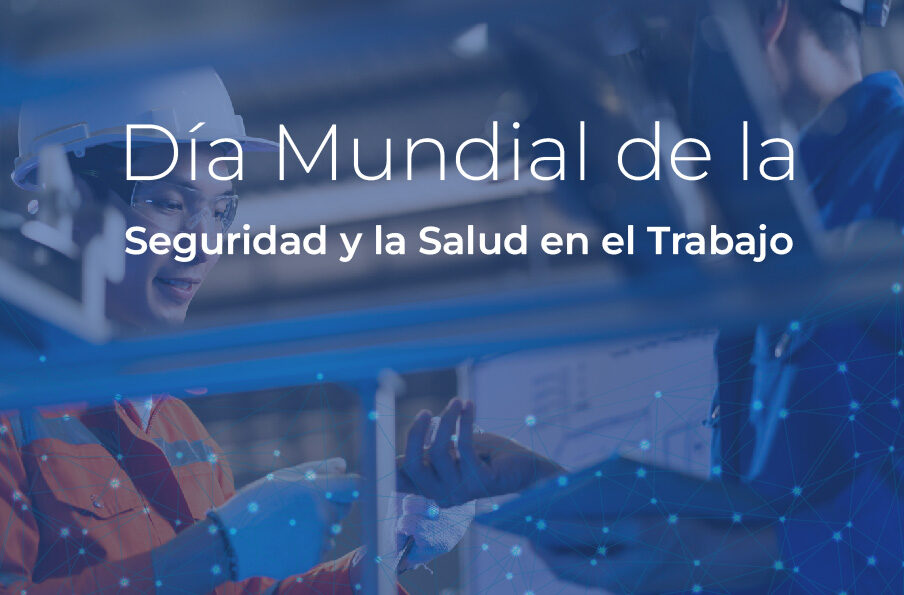The March project, developed by CETECE, is able to analyze gluten-free flours with a quick analysis, speeding up the work of companies in the sector.
Project background
Gluten-free products are finding greater demand due to the incidence of celiac disease or other gluten-associated pathologies.
However, the elimination of gluten appears as a major technological challenge.
The first difficulty to overcome is that the characterization of both flours and other gluten-free ingredients is much more limited than that of their gluten-containing counterparts, since they are not capable of developing a viscoelastic network.
This is why the need arises to use other equipment capable of evaluating their characteristics prior to their use in the food manufacturing process.
Another of the main problems encountered by gluten-free food producers is the lack of homogeneity of their raw materials, which makes processing difficult.
Being able to anticipate the problems with an adequate characterization of their ingredients or mixtures would mean a significant saving of time and economic resources.
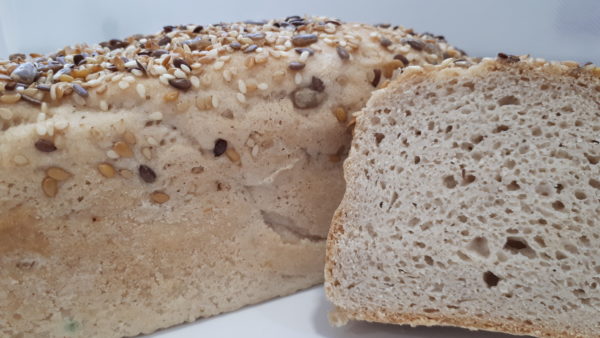
Problems solved
In this context, CETECE has implemented an advanced technique such as the RVA (Rapid Visco Analyzer), a device capable of analyzing the viscosity of flours, with or without the addition of other ingredients.
This equipment mainly measures changes in starch, which, in the case of gluten-free products, is one of their main components.
To date, previous studies and the experience of the researchers at CETECE have allowed us to have a wide range both in the analyses to be performed and in the interpretation of the results that can be obtained with this equipment.
In addition, this is associated with the limited availability of this technology in other Spanish laboratories.
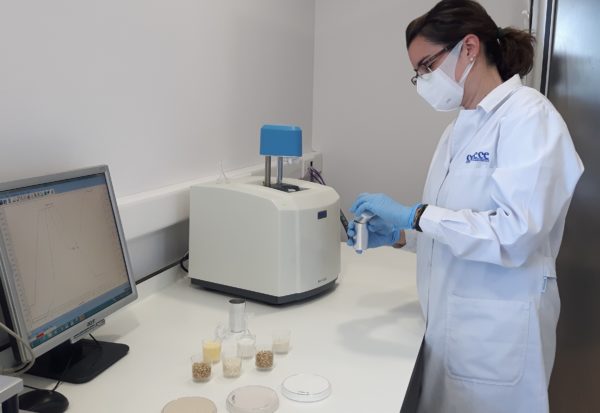
Application challenge
The RVA is a rotational viscometer that analyzes the pasting properties, i.e. the viscosity of the sample, in response to a temperature cycle or a constant temperature, under controlled shear stress and speed.
In spite of the extensive research carried out on gluten-free flours, there is neither a standard RVA characterization nor a standard RVA curve on which to base in order to obtain high quality products.
Thus, if the final objective is a béchamel-type sauce, the final viscosity shown by the flour must be high to obtain a paste of adequate consistency that does not leach water during cooling.
On the other hand, instant sauce preparations or pastry creams, for example, are products with a quick preparation that do not require temperature increase, and therefore sometimes pregelatinized modified starches are used to provide greater consistency when cold.
In gluten-free bakery and confectionery, the interpretation of viscosity curves is even more complex, as gluten-free formulas include a larger number of ingredients.
The main raw materials used in gluten-free bread are rice or corn flours or starches, combined with hydrocolloids to provide structure to the bread, and proteins, fibers or flours from other origins to give more flavor and slightly compensate for their nutritional imbalance.
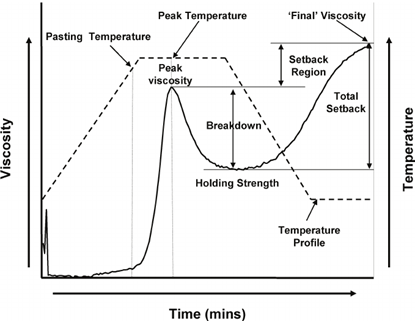
Typical viscosity profile of flour.
Extracted from: Crosbie and Ross, 2007.
Final result of the CETECE success story
In the present study, an evaluation of flours and starches of different origins has been carried out, focusing on two objectives: first, the characterization of their viscosity profiles and, second, the obtaining of a viscosity profile and consistency type with which to compare the flour blends in successive gluten-free baking studies, without the need to prepare the final product.
For the characterization of the different flour and starch samples, the RVA Standard 1 test (ICC 162) was applied.
The flours presented were rice, buckwheat and millet, and corn starch (see image).
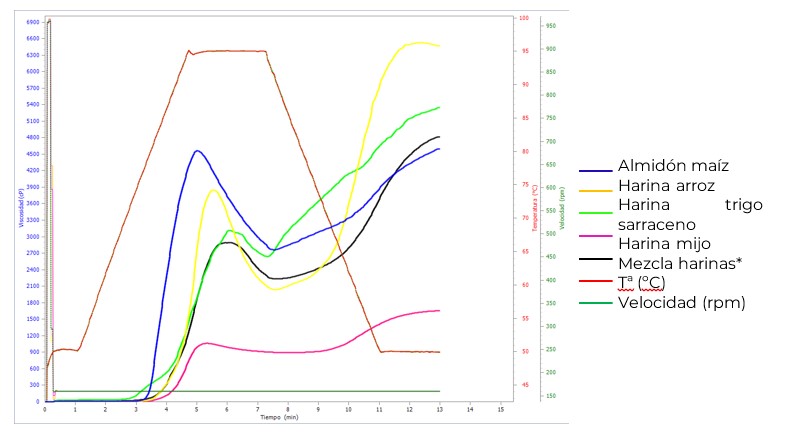
Viscosity profiles resulting from the flours and starch evaluated.
*Flour blend: 25% Corn starch, 25% Rice flour, 25% Buckwheat flour
and 25% millet flour.
The results of the study indicated that viscosity changes due to temperature and shear conditions of the equipment result in modifications in the molecular structure of starch.
According to the samples analyzed, corn starch is the cereal that most rapidly hydrates and begins to gelatinize.
It is the sample with the highest swelling capacity.
However, during cooling in the phase known as starch retrogradation, rice flour appears as the ingredient with the highest final viscosity, even ahead of corn starch.
Therefore, rice, corn and buckwheat would give an adequate consistency to the bread after baking in the oven.
On the other hand, millet flour, which remains at values up to three times lower than the rest of the samples, shows that it would not be possible to replace rice flour or corn starch with this ingredient, since it would not provide the necessary support structure to the gluten-free bread dough.
Based on these results, studies of mixtures of the aforementioned raw materials were carried out.
The proportion that resulted in the bread with the best volume, with a slightly open crumb structure without compacting and the greatest intensity in odors and aromas was 25% of each of the above-mentioned flours and starches.
Figure 2 shows the resulting viscosity curve of the mixture.
Although the viscosity of the flour and starch mixture is reduced by the presence of millet, the final viscosity values are practically the same as those achieved with corn starch.
Therefore, it has been possible to establish a typical RVA curve of flour mixes for the production of gluten-free breads of adequate quality.
However, the study of viscosity profiles in gluten-free systems presents a great complexity and still requires the study in other matrices in greater depth.
More information about the success story at CETECE.
CETECE’s project is financed by the ICE, Instituto para la Competitividad Empresarial (Institute for Business Competitiveness), through the line of aid for R+D+i.
From the Network of Technology Centers interdisciplinary work in an integrated manner, covering all technical disciplines. technical disciplines and finding innovative solutions in all parts of the processes.
If you want us to help you to empower your company and to find innovative technological solutions for your processes, do not hesitate to contact us at Noddo.
Follow us on LinkedIn and Twitter or sign up for our newsletter to stay up to date with what’s new on the Web.




